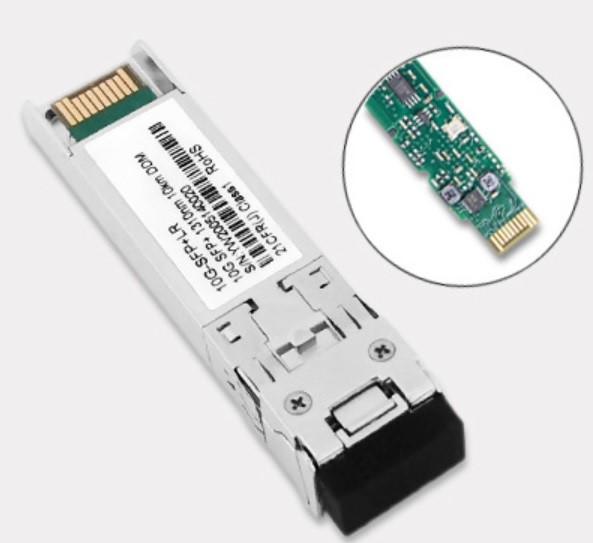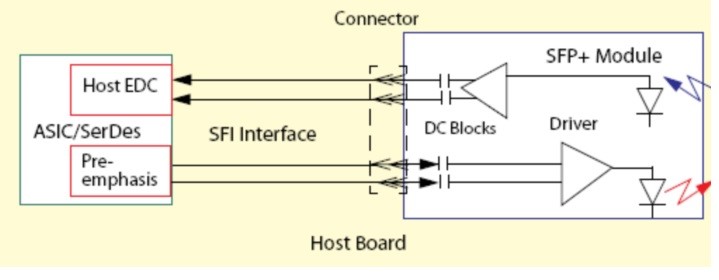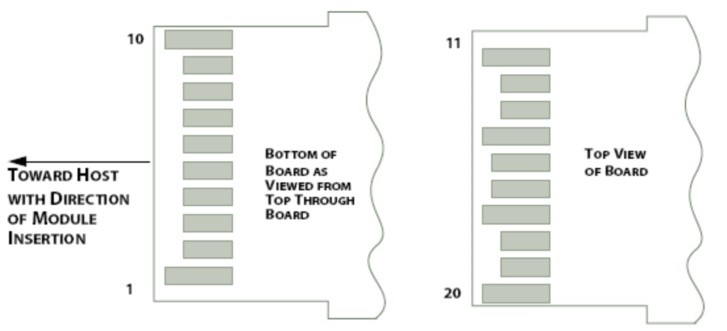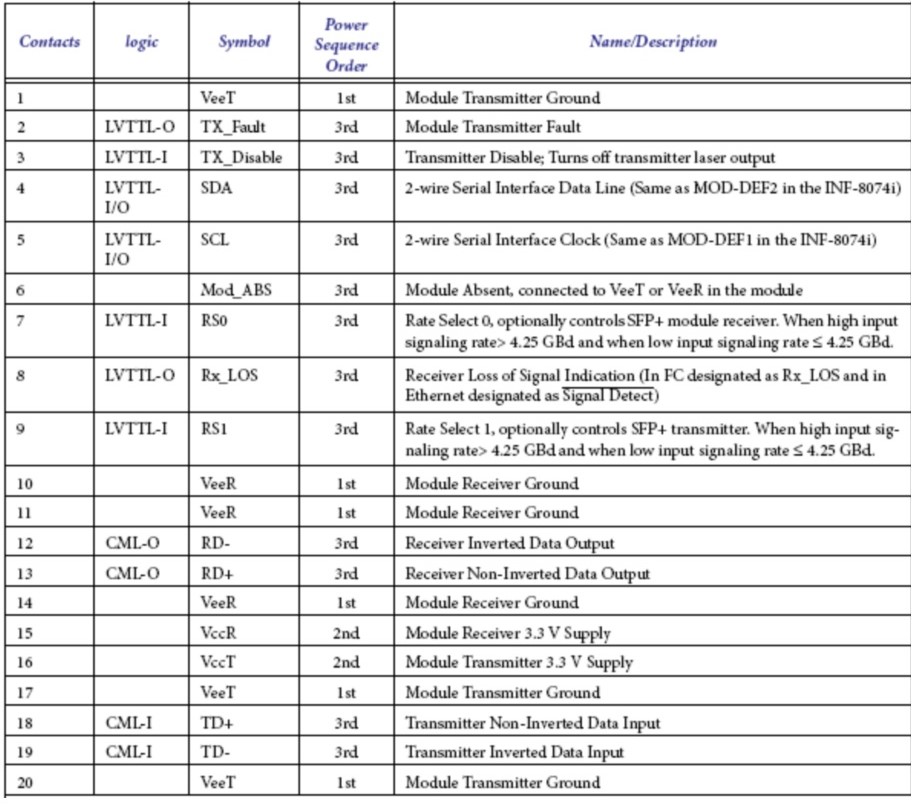Product Description:
This 1270//1330nm DFB 10 Gigabit SFP+ transceiver is designed to transmit and receive optical data over single mode optical fiber for link length 10km.
The BIDI SFP+ LR module electrical interface is compliant to SFI electrical specifications. The transmitter input and receiver output impedance is 100 Ohms differential. Data lines are internally AC coupled. The module provides differential termination and reduce differential to common mode conversion for quality signal termination and low EMI. SFI typically operates over 200 mm of improved FR4 material or up to about 150mmof standard FR4 with one connector.
In the transmit direction, the SFP+ transceiver module receives a 10.3125Gb/s electrical signal (signaling rate) from the host board ASIC/SERDES and converts the data to an optical signal via the Laser Driver that controls the Laser diode in the Transmitter Optical Sub-Assembly (TOSA). An open collector compatible Transmit Disable (Tx_Dis) is provided. A logic “1,” or no connection on this pin will disable the laser from transmitting. A logic “0” on this pin provides normal operation. The transmitter has an internal automatic power control loop (APC) to ensure constant optical power output across supply voltage and temperature variations. An open collector compatible Transmit Fault (T Fault) is provided. TX_Fault is a module output contact that when high, indicates that the module transmitter has detected a fault condition related to laser operation or safety. The TX_Fault output contact is an open drain/collector and shall be pulled up to the Vcc_Host in the host with a resistor in the range 4.7-10 kΩ. TX_Disable is a module input contact. When TX_Disable is asserted high or left open, the SFP+ module transmitter output shall be turned off. This contact shall be pulled up to VccT with a 4.7 kΩ to 10 kΩ resistor.
The receiver converts 10Gbit/s serial optical data into serial PECL/CML electrical data. An open collector compatible Loss of Signal is provided. Rx_LOS when high indicates an optical signal level below that specified in the relevant standard. The Rx_LOS contact is an open drain/collector output and shall be pulled up to Vcc_Host in the host with a resistor in the range 4.7-10 kΩ, or with an active termination. Power supply filtering is recommended for both the transmitter and receiver. The Rx_LOS signal is intended as a preliminary indication to the system in which the SFP+ is installed that the received signal strength is below the specified range. Such an indication typically points to non-installed cables, broken cables, or a disabled, failing or a powered off transmitter at the far end of the cable.
The 3rd functional capability of the SFP+ module is the 2 wire serial, I2C, interface. I2C is used for serial ID, digital diagnostics, and module control functions. The enhanced digital diagnostics monitoring interface allows real time access to the device allowing monitor of received optical power, laser bias current, laser optical output power, etc.

Figure 1 The model of 10G

Figure 2 Logic Diagram
Product features
Fiber Bi-Directional SFP+ Optical Transceiver
Electrical interface compliant to SFF-8431
Hot Pluggable
Up to 10.7Gbps Data Links
1270/1330nm DFB LD Transmitter
1270/1330nm PIN Receiver
Low power consumption
Applicable for 10km SMF connection
All-metal housing for superior EMI performance
Advanced firmware allow customer system encryption information to be stored in transceiver
Cost effective SFP+ solution, enables higher port densities and greater bandwidth
Operating case temperature: 0 to 70 °C
Applications
10Gbps Ethernet or SONET/SDH switches and routers
10G/8.5G/4.25G/2.125G/1.0625G Fiber Channel
Other 10Gbps optical links
Pin definition
The SFP+ modules are hot-pluggable. Hot pluggable refers to plugging in or unplugging a module while the host board is powered. The SFP+ host connector is a 0.8 mm pitch 20 position right angle improved connector specified by SFF-8083, or stacked connector with equivalent with equivalent electrical performance. Host PCB contact assignment is shown in Figure 2 and contact definitions are given in Table 2. SFP+ module contacts mates with the host in the order of ground, power, followed by signal as illustrated by Figure 3 and the contact sequence order listed in Table 2.

Figure 3: Interface to Host PC
Figure 4: Module Contact Assignment

Indoor AP
Outdoor AP
Router Product
Ethernet Switch
SDWAN Hardware
SFP Series
Bank Solution
Telecom Solution
Security Solution
IOT Solution
